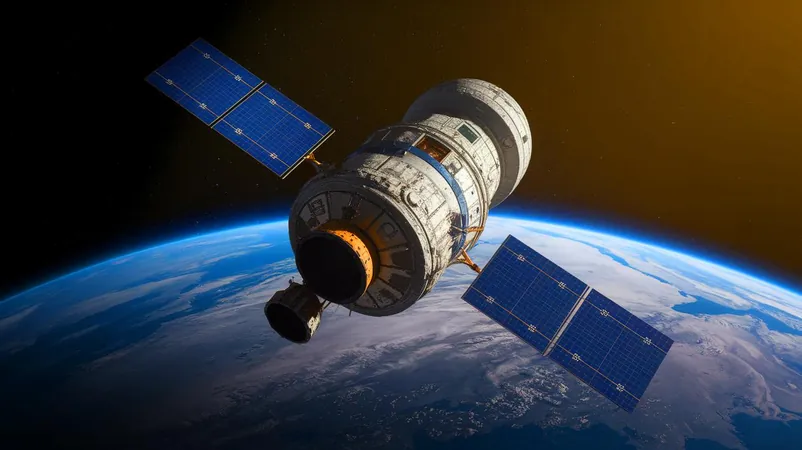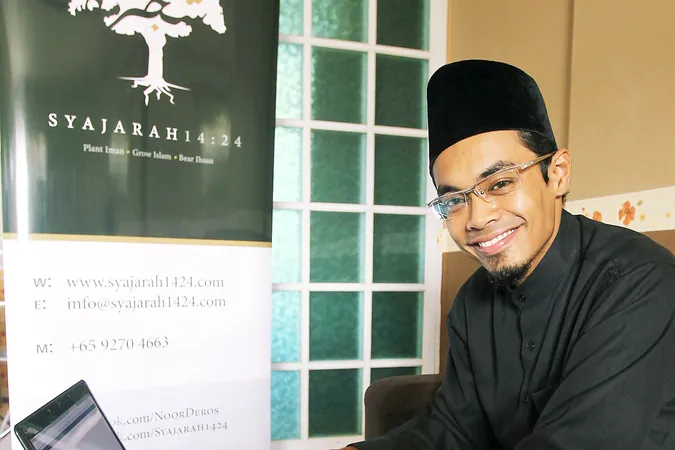
End of an Era: Vanguard-1, the World’s Oldest Satellite, Faces Final Farewell After 67 Years
2025-04-14
Author: Jia
A Historic Beacon in Space Exploration
Since its launch in March 1958, Vanguard-1 has been more than just a satellite; it’s a symbol of human innovation and the relentless spirit of discovery. Pioneering solar-powered technology, this small yet significant satellite has orbited Earth for over six decades, bearing silent witness to monumental advancements in space science. Now, a groundbreaking proposal emerges to bring this historic relic back to Earth, stirring up energy and debates over the feasibility of such an ambitious mission.
The Launch That Changed Everything
In the heat of the Cold War's space rivalry, the United States was racing against the Soviet Union, leading to the inception of Vanguard-1 by the Naval Research Laboratory. Designed to test new rocket capabilities and study space conditions, Vanguard-1 was a marvel of its time. Unlike its Soviet counterparts, it achieved a high elliptical orbit, allowing it to avoid the catastrophic pull of Earth’s atmosphere and ensuring its longevity.
Unlocking Secrets of Space—The Retrieval Proposal
The team's aspiration to retrieve Vanguard-1 is nothing short of extraordinary. Led by Booz Allen Hamilton, the mission unfolds in two phases: first, an inspection spacecraft will evaluate the satellite’s condition, scrutinizing potential damage from space debris and assessing its structural integrity. The second phase aims to bring Vanguard-1 back, either by repositioning it into a lower orbit for easier access or by safely docking it with the International Space Station. This ambitious plan echoes NASA's successful retrieval missions from decades past.
Revolutionizing Space Debris Management
Beyond being a historical artifact, retrieving Vanguard-1 could spearhead advancements in how we manage space debris. The methodologies developed during this mission might serve as a blueprint for future cleanup missions amidst the escalating debris crisis threatening operational satellites. By demonstrating the successful retrieval of a long-lasting satellite, this project could inspire innovative strategies and partnerships across public and private sectors, advancing sustainability in space exploration.
A New Future for Vanguard-1?
If all goes to plan and Vanguard-1 is brought back home, it could find a cherished spot at the Smithsonian National Air & Space Museum. This would allow scientists to conduct vital research on its materials, unveiling their responses to the harsh realities of space over decades. The preservation of Vanguard-1 is not merely a nod to our past; it is a testament to the ongoing evolution of space exploration.
Legacy of a Pioneer
As we look ahead to new horizons in space, the story of Vanguard-1 serves as both a reminder of our pioneering spirit and an invitation to reflect on the future. What new frontiers will we discover? What challenges lie ahead as we continue to defy the limits of space? Vanguard-1’s potential retrieval is a poignant chapter in the unfolding saga of our journey into the cosmos.



 Brasil (PT)
Brasil (PT)
 Canada (EN)
Canada (EN)
 Chile (ES)
Chile (ES)
 Česko (CS)
Česko (CS)
 대한민국 (KO)
대한민국 (KO)
 España (ES)
España (ES)
 France (FR)
France (FR)
 Hong Kong (EN)
Hong Kong (EN)
 Italia (IT)
Italia (IT)
 日本 (JA)
日本 (JA)
 Magyarország (HU)
Magyarország (HU)
 Norge (NO)
Norge (NO)
 Polska (PL)
Polska (PL)
 Schweiz (DE)
Schweiz (DE)
 Singapore (EN)
Singapore (EN)
 Sverige (SV)
Sverige (SV)
 Suomi (FI)
Suomi (FI)
 Türkiye (TR)
Türkiye (TR)
 الإمارات العربية المتحدة (AR)
الإمارات العربية المتحدة (AR)